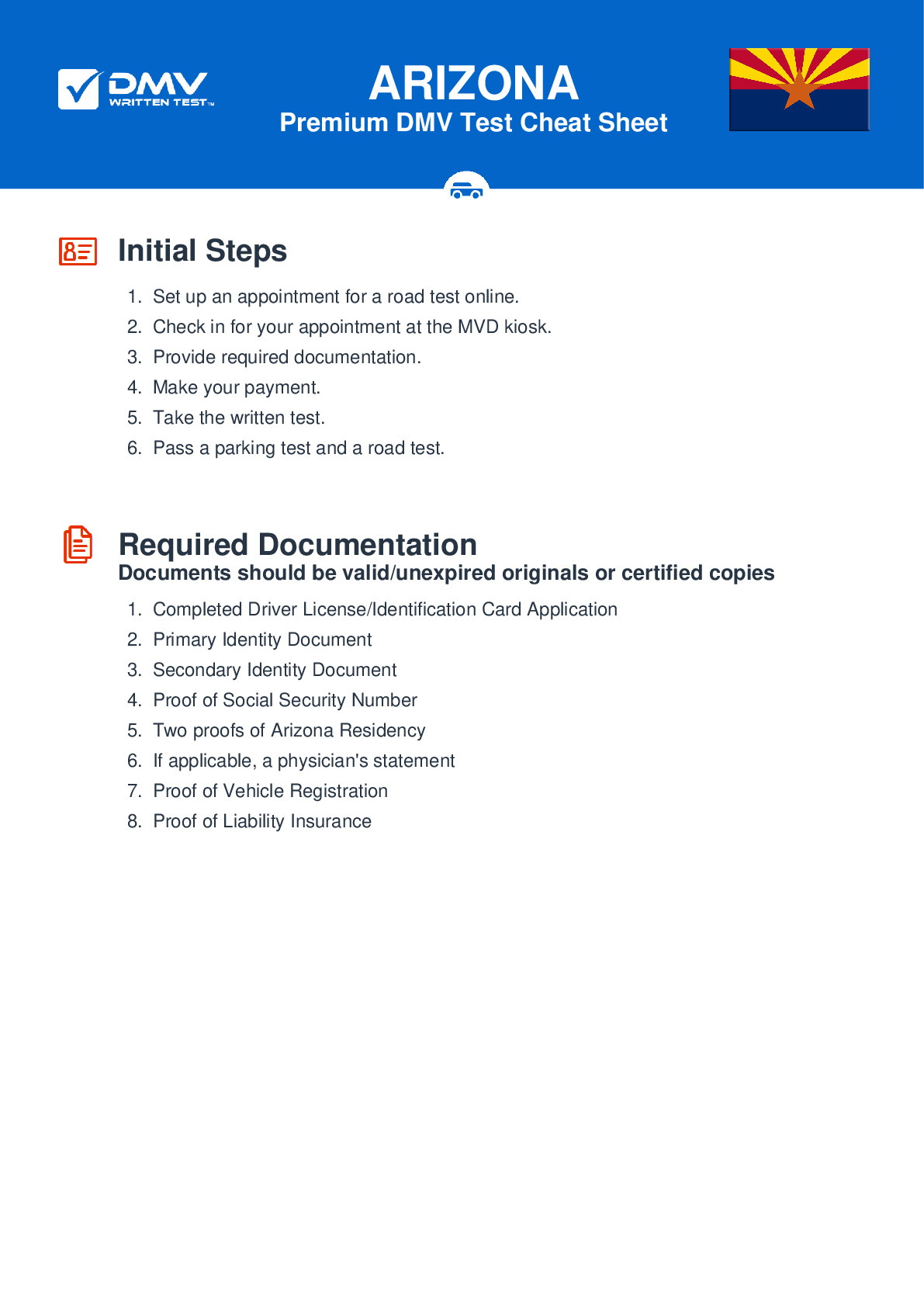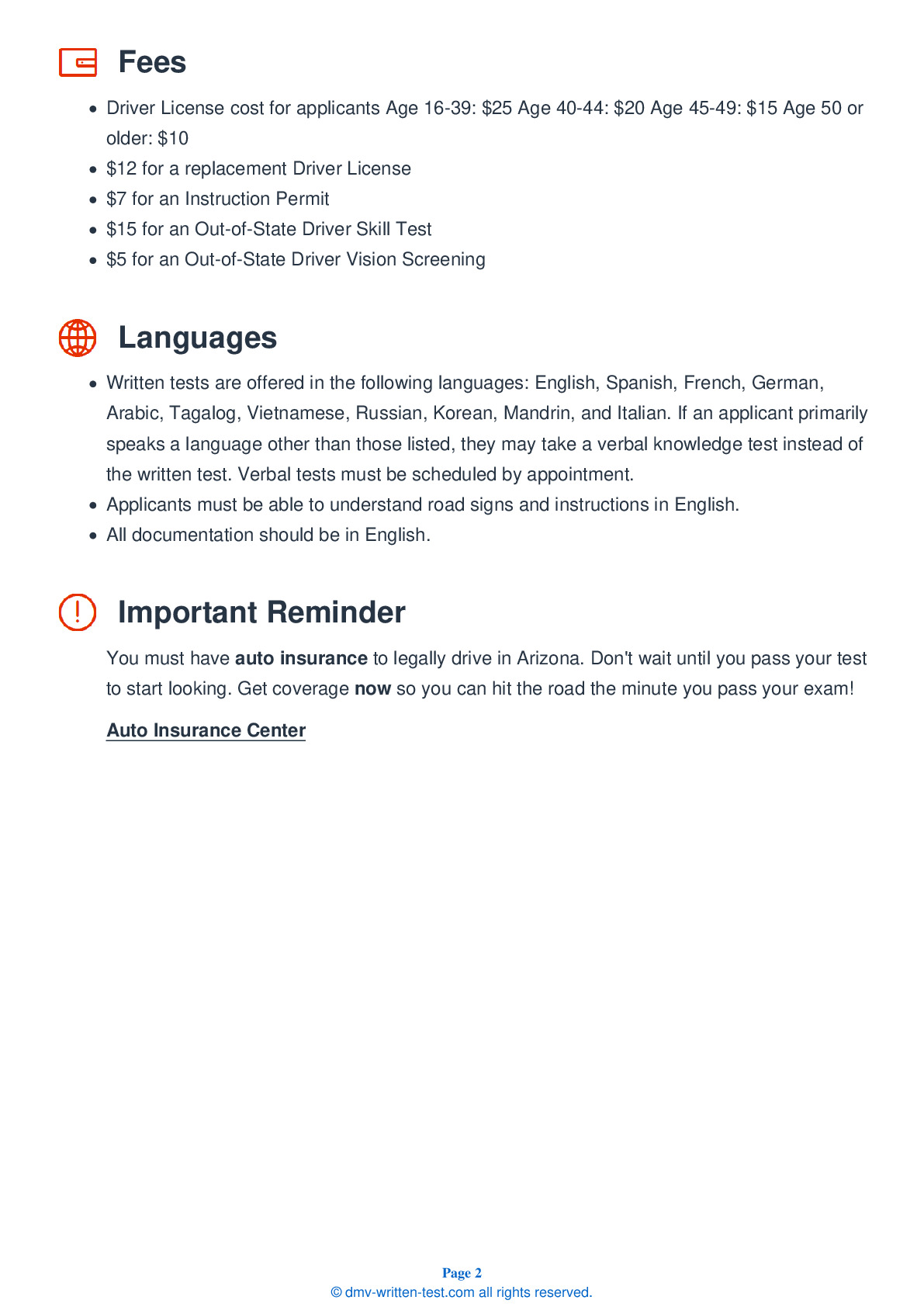2025 Arizona Permit Test 4
The following questions are from real DMV written tests. These are some of the actual permit questions you will face in Arizona. Each permit practice test question has three answer choices. Select one answer for each question and select "grade this section." You can find this button at the bottom of the drivers license quiz. For a complete list of questions and answers for Arizona please visit https://cheat-sheets.dmv-written-test.com/en/arizona/car.
Number of Tests
Number of Question
Passing Score
1. If your vehicle has a two-part safety belt system, you should:
Explanation
If your vehicle has a two-part seat belt system, be sure to wear both the lap belt and the shoulder belt. Wearing either part alone greatly reduces your protection. If you have an automatic shoulder belt, be sure to buckle your lap belt as well.
2. As you enter into a roundabout, you should slow down and:
Explanation
When entering a roundabout, you must yield to pedestrians, bicyclists, and traffic already in the roundabout.
3. A pedestrian starts to cross the street after the "Don't Walk" signal begins to flash. The pedestrian is in the middle of the street when your signal light changes to green. You should:
Explanation
At a green light, you must give the right-of-way to any vehicle, bicyclist, or pedestrian in the intersection. If a pedestrian begins crossing the street after the traffic signal light starts flashing, wait until they have crossed the street before proceeding.
4. When approaching a T intersection, drivers:
Explanation
When approaching a T intersection while traveling on the street ending at the intersection, you must stop and yield the right-of-way to cross traffic. Only proceed when it is safe to do so.
5. When a pedestrian guided by a dog or carrying a white cane is crossing the street:
Explanation
Blind or partially blind pedestrians may carry a white cane or use the assistance of a guide dog. You must always yield the right-of-way to a pedestrian who is using a guide dog or carrying a white cane.
6. Which of the following driving skills is/are affected by the use of alcohol and/or drugs?
Explanation
Alcohol and other drugs can negatively effect a number of skills needed for safe driving, including a driver's reaction time, coordination, alertness, and ability to concentrate.
8. If there is no crosswalk and you see a pedestrian crossing your lane, you should:
Explanation





